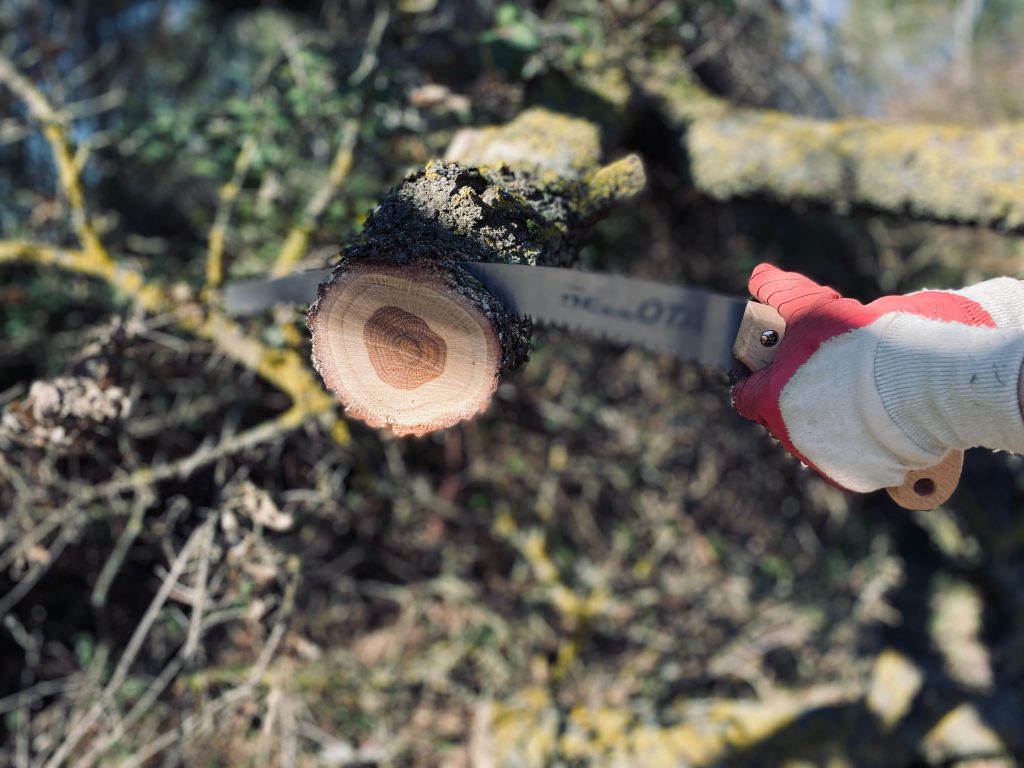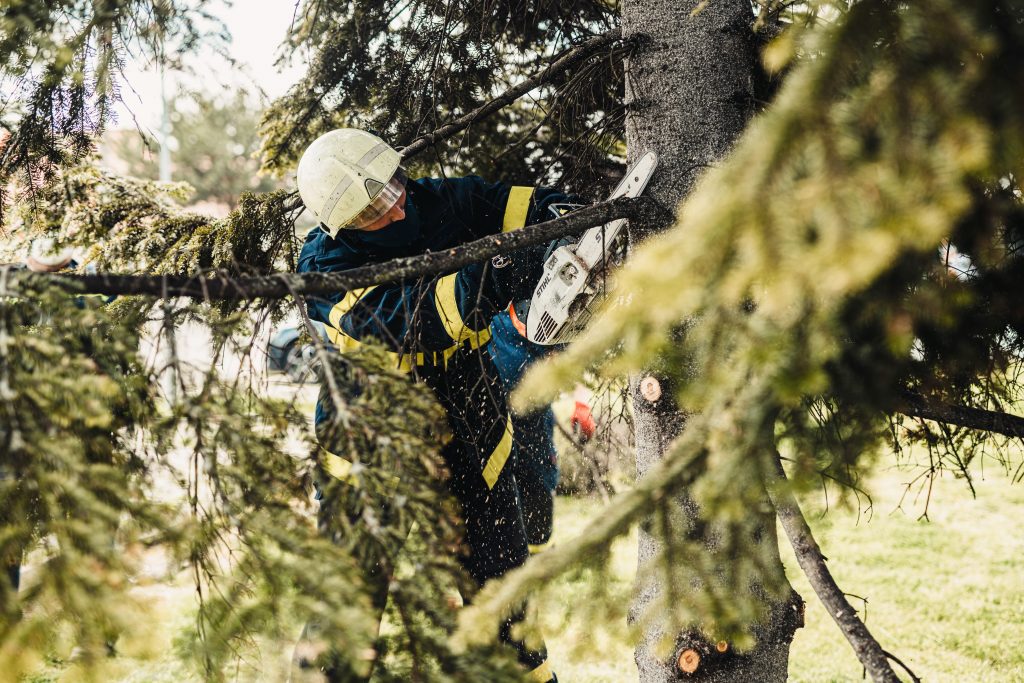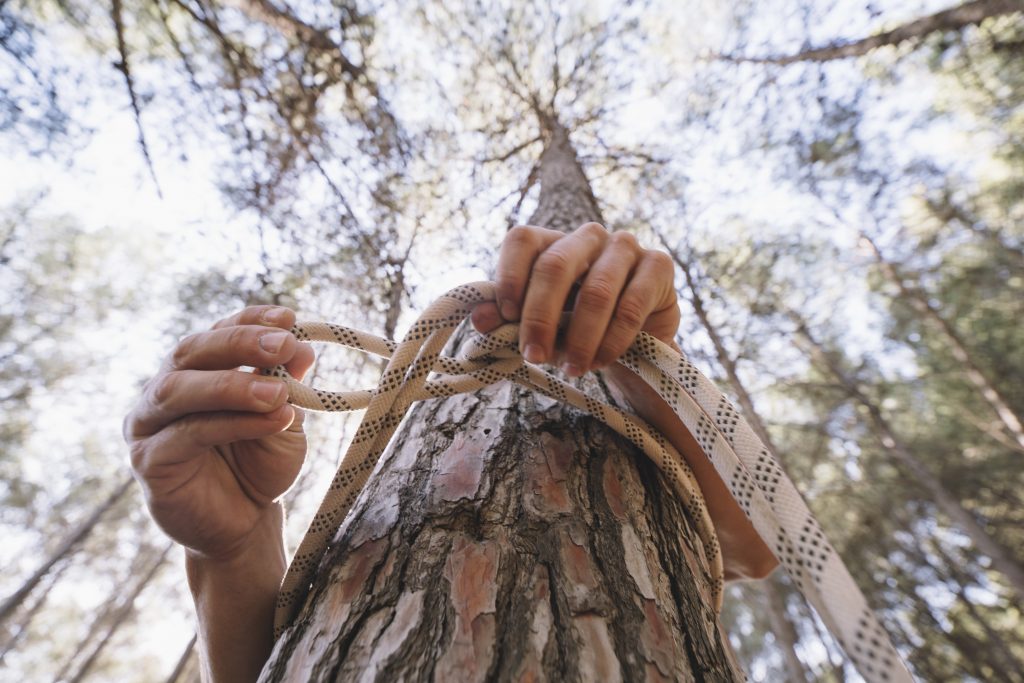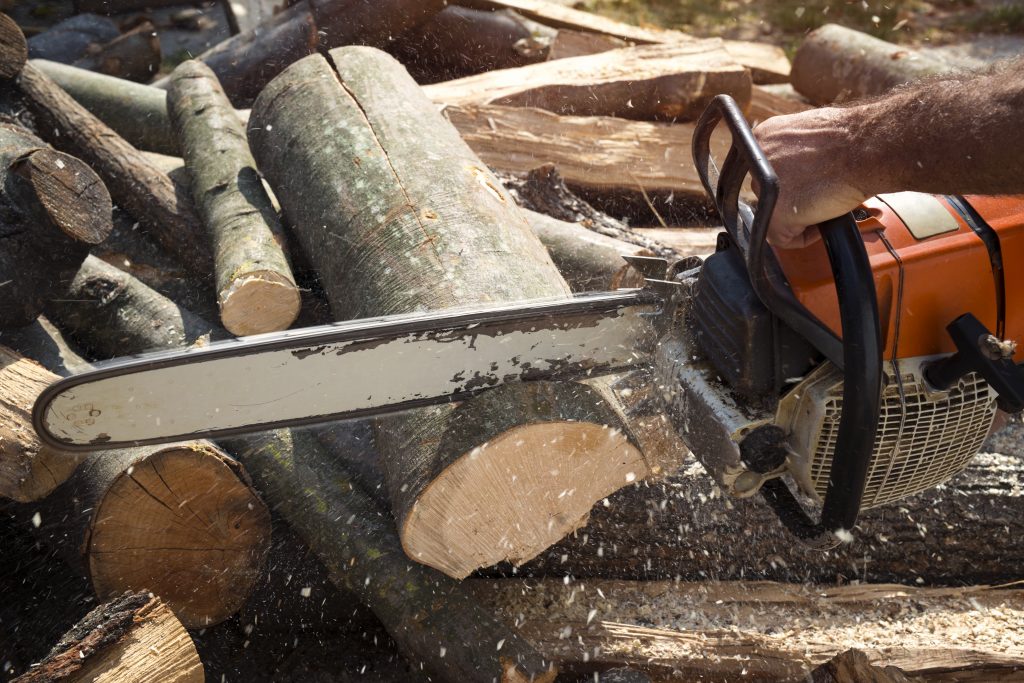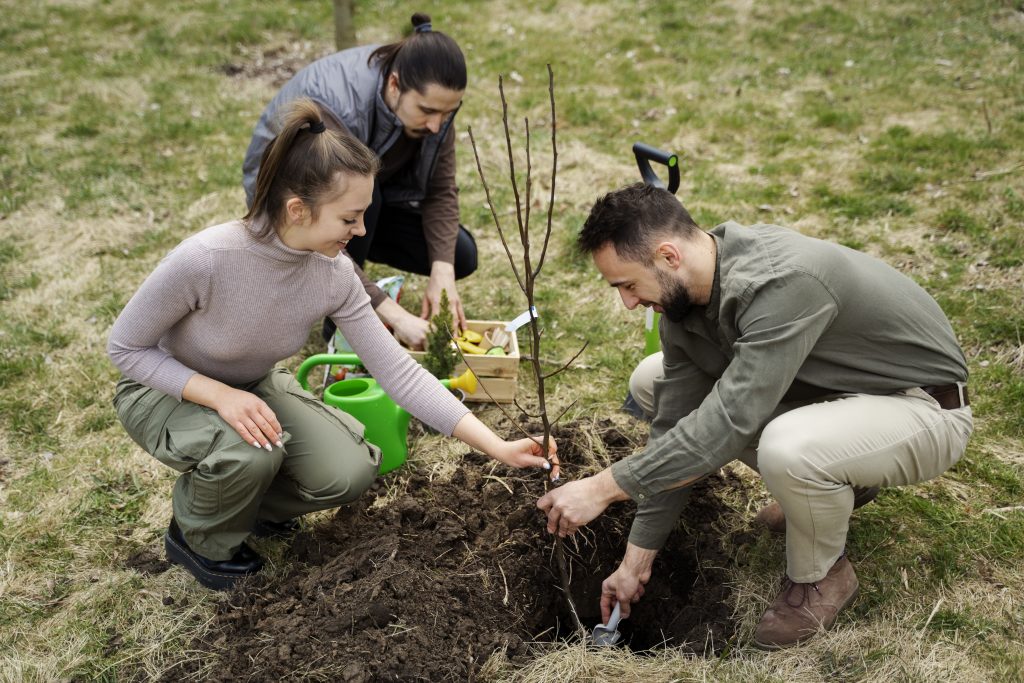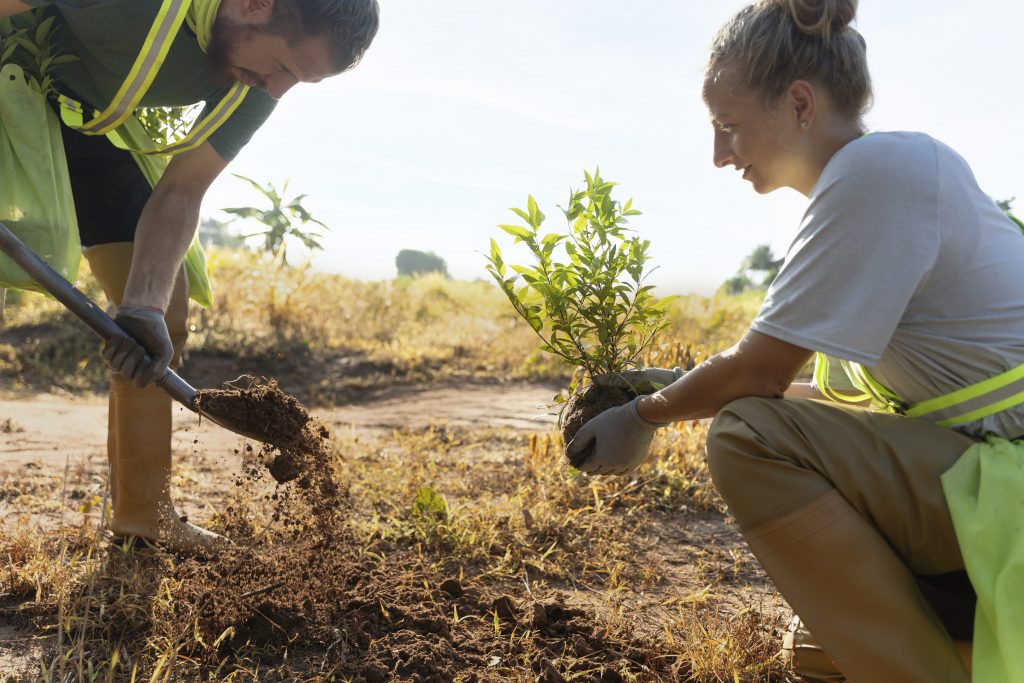COMMON MISTAKES TO AVOID DURING TREE PRUNING
COMMON MISTAKES TO AVOID DURING TREE PRUNING
Proper tree pruning is essential for the health, safety, and aesthetic value of trees. Pruning involves the selective removal of branches and foliage to achieve specific objectives, such as enhancing tree structure, promoting growth, and mitigating potential risks. The importance of proper tree pruning is evident in various ways:
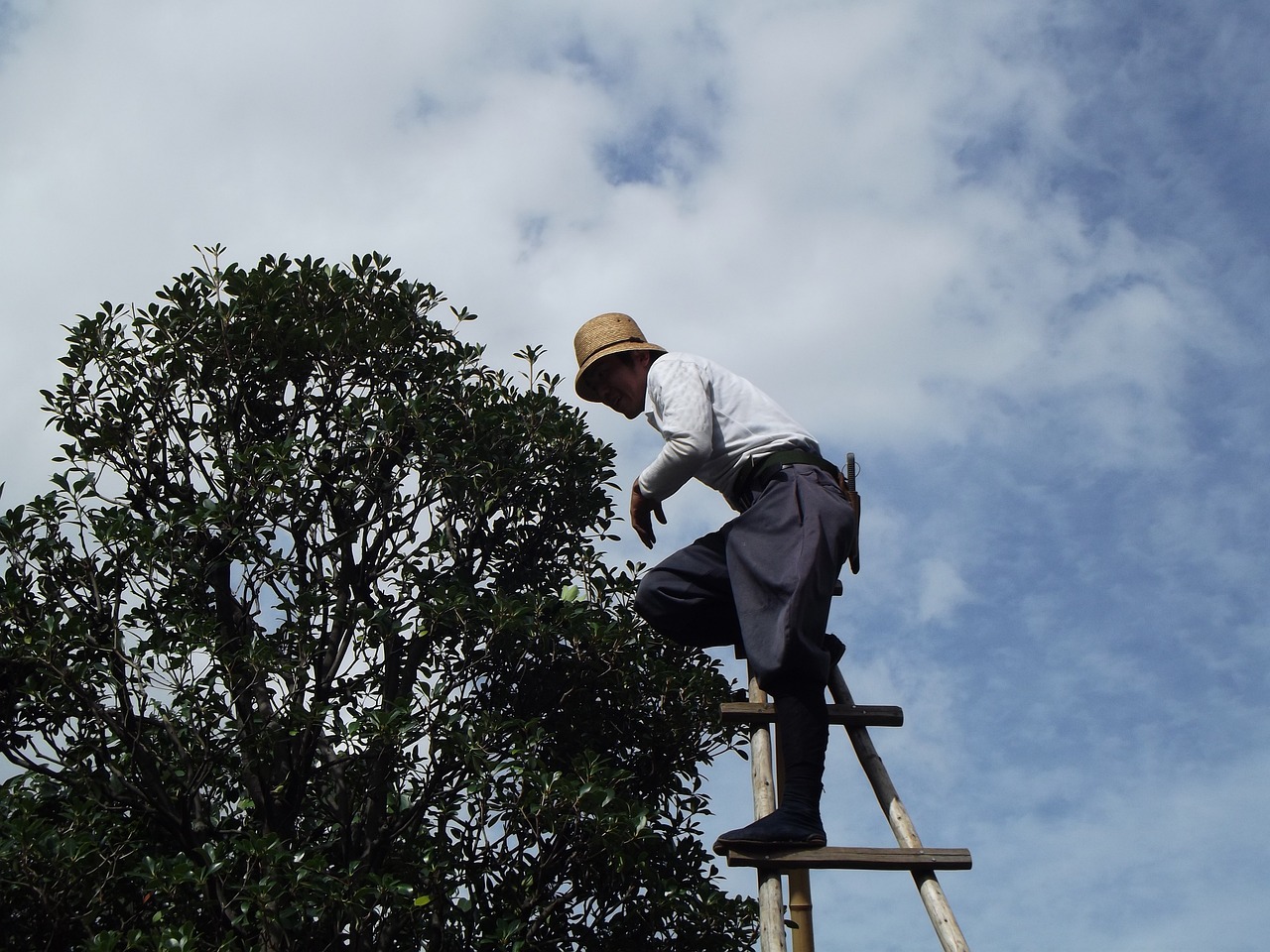
Health and Longevity
- Pruning removes dead, diseased, or decaying branches, preventing the spread of diseases and pests throughout the tree.
- Proper pruning techniques encourage strong branch attachments, reducing the risk of breakage and potential tree failure.
- Adequate air circulation and sunlight penetration resulting from pruning contribute to overall tree health.
Structural Integrity
- Correct pruning helps shape the tree’s structure, preventing the development of weak or narrow branch unions that could lead to splitting.
- Selective pruning reduces the weight of branches, minimizing the risk of branch or limb failure, particularly during storms.
Safety
- Pruning removes hazardous branches that could fall on people, vehicles, or structures, minimizing potential accidents.
- Proper pruning also addresses low-hanging branches that obstruct pedestrian walkways, roads, or sightlines.
Aesthetic Appeal
- Pruning enhances the tree’s appearance, promoting a balanced and visually pleasing canopy.
- Well-pruned trees can improve the overall landscape design and increase property value.
Fruit Production
- Fruit-bearing trees benefit from pruning, as it improves air circulation and sunlight exposure, leading to better fruit quality and yield.
Disease and Pest Management
- Pruning allows for better inspection of the tree’s health, enabling early detection and treatment of diseases and infestations.
- Removing infected or infested branches can help contain the spread of pathogens and pests.
Encouraging Growth
- Pruning stimulates new growth and branching, rejuvenating older trees and enhancing their vitality.
- Thinning out crowded branches improves the distribution of resources, leading to better growth.
Mitigating Storm Damage
- A well-pruned tree is better equipped to withstand strong winds and storms, reducing the risk of limb breakage or uprooting.
Preservation of Historic Trees
- Proper pruning is crucial for preserving ancient or historic trees, extending their lifespan and cultural value.
Environmental Benefits
- Pruned trees contribute to improved air quality by promoting proper air circulation and minimizing the growth of mold and fungi.
Economic Considerations
- Preventive pruning is more cost-effective than dealing with tree-related emergencies, such as fallen branches or tree removal.
Professional Expertise
- Engaging certified arborists or tree care specialists for pruning ensures the use of proper techniques, benefiting the tree’s health and appearance.
Proper tree pruning is a vital practice for maintaining healthy, safe, and aesthetically pleasing trees. It is an investment in the well-being of trees, the environment, and the overall landscape, providing benefits that extend beyond the individual tree to the surrounding ecosystem and community.
Potential Consequences Of Improper Pruning
Improper pruning can have a range of negative consequences for trees, their health, structural integrity, and overall aesthetics. It’s important to understand the potential risks associated with improper pruning practices in order to avoid these negative outcomes. Here are some of the consequences of improper pruning:
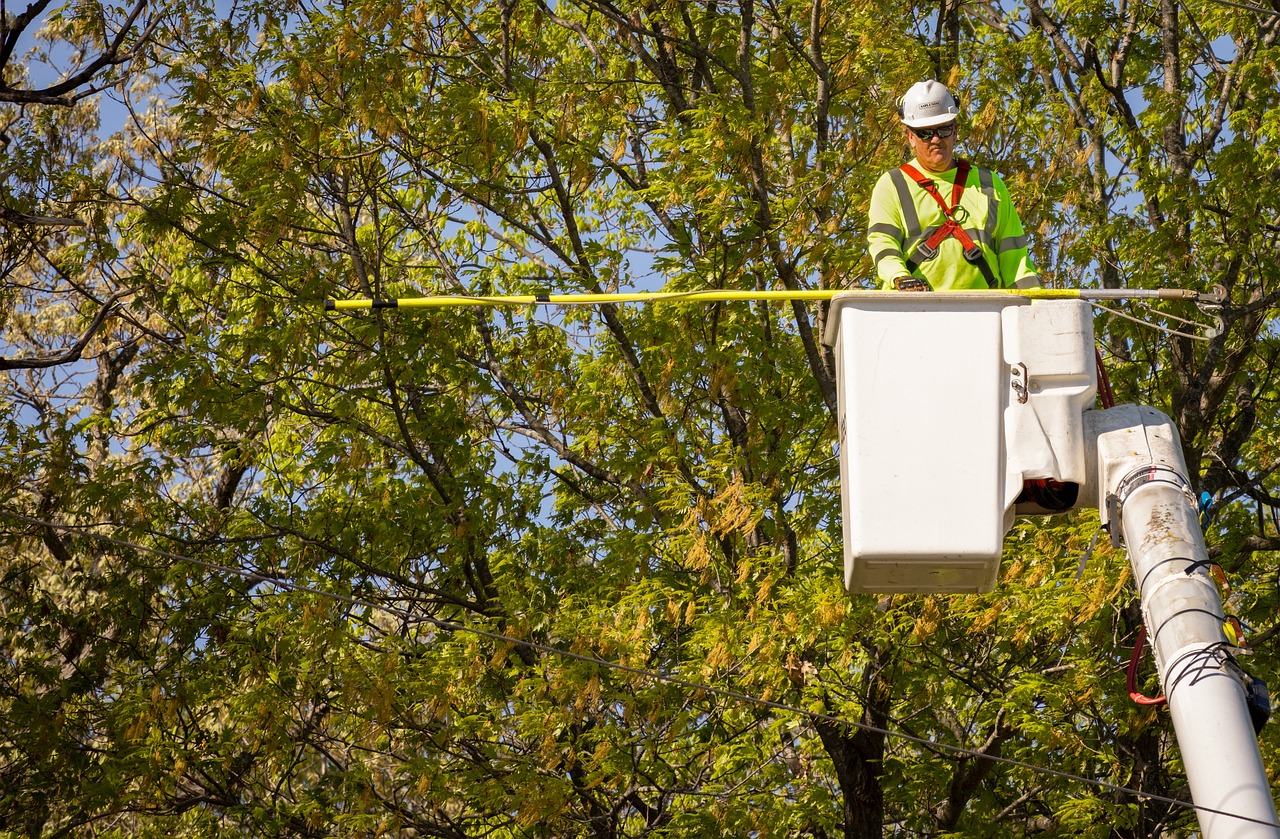
Disease and Pest Infestations
- Improper cuts and wounds created during pruning can become entry points for pathogens and pests.
- Infected or infested areas can spread disease throughout the tree, weakening its health and potentially leading to its decline.
Weak Branch Attachments
- Improper pruning can result in weakly attached branches, increasing the likelihood of branch failure, especially during storms or heavy winds.
- Poor branch attachments can also lead to splitting and breakage, causing safety hazards.
Decay and Rot
- Incorrect pruning cuts can expose the inner wood to decay-causing organisms.
- Decay can spread internally within the tree, compromising its structural integrity and stability.
Stress and Decline
- Over-pruning or aggressive removal of branches can stress the tree, depleting its energy reserves and affecting its ability to thrive.
- Stressed trees are more susceptible to diseases, pests, and environmental stressors.
Poor Aesthetics
- Improper pruning can result in unbalanced or unnatural tree shapes, affecting the tree’s visual appeal and the overall landscape aesthetics.
Loss of Canopy Density
- Excessive foliage removal through improper pruning can reduce the tree’s ability to photosynthesize and produce energy.
- A sparse canopy compromises the tree’s growth and overall health.
Sunscald and Bark Damage
- Improperly pruned trees can have exposed bark areas, making them susceptible to sunscald (damage from excessive sunlight).
- Sunscald weakens the bark and creates entry points for pests and diseases.
Regrowth Issues
- Topping or improper heading cuts can lead to weak, fast-growing regrowth with poor branch attachments.
- Rapid regrowth is often structurally weak and more prone to breakage.
Reduced Fruit Production
- Incorrect pruning of fruit trees can lead to reduced fruit production and lower quality fruit.
- Over-pruning can also remove flowering buds needed for future fruiting.
Loss of Habitat and Biodiversity
- Improper pruning can remove nesting sites and shelter for birds and other wildlife, reducing habitat quality.
- Reduced tree health affects the ecosystem services trees provide, such as air purification and carbon sequestration.
Long-Term Damage
- The negative effects of improper pruning may not become immediately apparent but can accumulate over time, leading to irreversible damage.
Economic Costs
- Correcting the consequences of improper pruning can be costly, involving corrective measures, tree care, or even tree removal.
To avoid these potential consequences, it’s important to follow proper pruning guidelines, consider the specific needs of each tree species, and, if needed, seek advice from certified arborists or tree care professionals.
Certainly, here are some common mistakes related to tree pruning and tips on how to avoid them:
Topping Trees:
- Mistake: Removing a significant portion of the tree’s upper canopy, resulting in an unnatural and unsightly appearance.
- Avoidance: Instead of topping, opt for selective pruning that maintains the tree’s natural shape and structure. If height reduction is necessary, use proper reduction cuts.
Over-Pruning:
- Mistake: Removing too many branches, leading to stress, reduced energy production, and potential decline.
- Avoidance: Follow the general guideline of removing no more than 25% of a tree’s foliage in a single pruning session. Prioritize dead, diseased, or damaged branches.
Improper Cuts:
- Mistake: Making improper cuts, such as leaving stubs or cutting too close to the branch collar.
- Avoidance: Make clean cuts just outside the branch collar, without leaving stubs. Use proper tools to avoid tearing or damaging the bark.
Pruning During Wrong Seasons:
- Mistake: Pruning at the wrong time of year can stress trees and hinder their recovery.
- Avoidance: Research the optimal pruning seasons for different tree species in your region. Avoid heavy pruning during times of active growth.
Lack of Planning:
- Mistake: Pruning without a clear plan can lead to an unbalanced canopy and poor overall tree health.
- Avoidance: Identify the objectives of pruning – whether it’s for safety, aesthetics, or health – and plan cuts accordingly.
Removing Main Branches:
- Mistake: Removing major branches (leaders) can disrupt the tree’s natural growth and structure.
- Avoidance: Maintain central leader branches and consider the overall architecture of the tree.
Using Improper Tools:
- Mistake: Using dull or improper tools can lead to ragged cuts and potential damage to the tree.
- Avoidance: Use sharp, clean pruning tools appropriate for the size of the branches. Disinfect tools between cuts to prevent the spread of disease.
Ignoring Tree Health:
- Mistake: Pruning without considering the tree’s overall health can worsen existing issues.
- Avoidance: Inspect the tree for signs of disease, pests, or stress before pruning. Address these issues before proceeding.
Ignoring Natural Shape:
- Mistake: Pruning trees into unnatural shapes can affect their growth and aesthetics.
- Avoidance: Respect the tree’s natural form and growth habit. Follow the branch collar when making cuts.
Working Near Utility Lines:
- Mistake: Pruning trees near utility lines without proper training or precautions.
- Avoidance: If there are utility lines nearby, contact your utility company or a professional arborist trained in utility line clearance.
Lack of Knowledge
- Mistake: Pruning without proper knowledge of tree biology and growth patterns.
- Avoidance: Educate yourself about different tree species, their growth habits, and proper pruning techniques. Consult with arborists for expert advice.
Not Seeking Professional Help
- Mistake: Attempting complex pruning tasks without professional assistance when needed.
- Avoidance: If you’re uncertain about proper pruning practices or dealing with large trees, consult a certified arborist for guidance.
Remember, tree pruning is a skill that requires knowledge and experience. When in doubt, seeking professional advice can help ensure the health, safety, and aesthetic appeal of your trees.
Benefits Of Seeking Guidance From Arborists Or Tree Care Experts
Seeking guidance from arborists or tree care experts offers numerous benefits when it comes to tree pruning and overall tree care. Arborists are trained professionals who specialize in the cultivation, management, and maintenance of trees. Here are some key advantages of seeking their expertise:
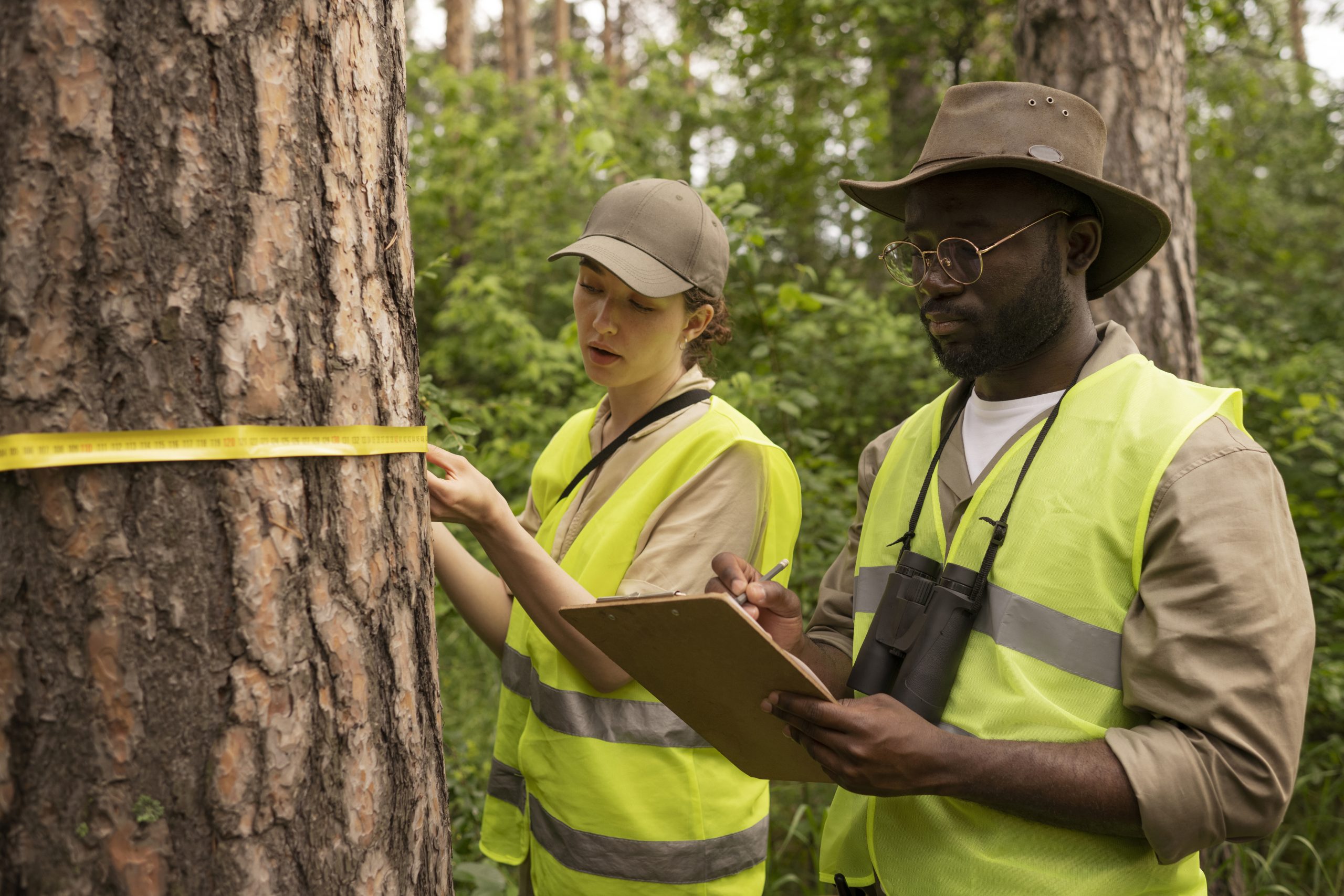
- Expert Knowledge: Arborists have in-depth knowledge of tree biology, growth patterns, diseases, pests, and proper pruning techniques. Their expertise ensures that trees are pruned in a way that promotes health, safety, and longevity.
- Proper Techniques: Arborists are trained in using proper pruning techniques that minimize damage to trees. They understand how to make clean cuts, avoid damaging branch collars, and prevent the spread of diseases.
- Species-specific Recommendations: Different tree species have unique requirements for pruning. Arborists can provide tailored advice based on the specific needs of each tree, ensuring that pruning is done in a way that benefits the species.
- Preserving Tree Health: Arborists assess the overall health of trees before recommending any pruning. They can identify signs of disease, pest infestations, or stress and address these issues before pruning, ensuring that the tree’s health is not compromised.
- Structural Integrity: Arborists understand the importance of maintaining proper tree structure. They can identify weak branches, assess branch attachments, and prune in a way that enhances the tree’s stability and reduces the risk of breakage.
- Seasonal Timing: Arborists know the optimal times to prune different tree species based on local climate and growth patterns. Pruning at the right time minimizes stress on trees and maximizes their recovery.
- Safety Considerations: Arborists are trained to work safely at heights and around power lines. They follow safety protocols to prevent accidents and injuries during pruning operations.
- Equipment and Tools: Arborists have access to specialized tools and equipment that are necessary for proper pruning. They can use these tools effectively to minimize tree damage and ensure clean cuts.
- Preserving Aesthetics: Arborists understand the importance of maintaining the aesthetic value of trees. They can shape trees in a way that enhances their visual appeal while maintaining their health.
- Long-term Planning: Arborists consider the long-term effects of pruning decisions. They plan for the tree’s future growth, ensuring that pruning supports its natural development over time.
- Disease and Pest Management: Arborists can identify signs of disease and pest infestations and recommend appropriate treatments. Pruning may be part of a larger strategy to manage these issues.
- Educational Opportunities: When you work with an arborist, you have the opportunity to learn about proper tree care practices. They can explain the rationale behind their recommendations and provide insights into tree biology.
- Cost-effectiveness: While hiring an arborist involves a fee, their expertise can save you money in the long run by preventing potential issues that may arise from improper pruning.
About Murray, Utah
Murray is a city situated on the Wasatch Front in the core of Salt Lake Valley in the U.S. state of Utah. Named for territorial governor Eli Murray, it is the state's fourteenth largest city. According to the 2020 census, Murray had a population of 50,637. Murray shares borders with Taylorsville, Holladay, South Salt Lake and West Jordan, Utah. Once teeming with heavy industry, Murray's industrial sector now has little trace and has been replaced by major mercantile sectors. Known for its central location in Salt Lake County, Murray has been called the Hub of Salt Lake County. Unlike most of its neighboring communities, Murray operates its own police, fire, power, water, library, and parks and recreation departments and has its own school district. While maintaining many of its own services, Murray has one of the lowest city tax rates in the state.
Neighborhoods in Murray, Utah
Murray Oakes, Grant Park, Southwood Park, Murray Park, Murray Park Restrooms, Willow Pond Park, Neighborhood Veterinary Care
Things To Do in Murray, Utah
Bus Stops in Murray, Utah to Truco Services, Inc.
Bus Stop in Murray Central Station (Bay C) Murray, Utah to Truco Services, Inc.
Bus Stop in State St @ 4801 S Murray, Utah to Truco Services, Inc.
Bus Stop in Murray North Station Murray, Utah to Truco Services, Inc.
Bus Stop in State St @ 4949 S Murray, Utah to Truco Services, Inc.
Bus Stop in Murray Central Frontrunner/Trax Station Murray, Utah to Truco Services, Inc.
Bus Stop in Murray Blvd / Vine St (SB) Murray, Utah to Truco Services, Inc.
Bus Stop in State St @ 3925 S Murray, Utah to Truco Services, Inc.
Bus Stop in State St @ 4824 S Murray, Utah to Truco Services, Inc.
Bus Stop in State St @ 5223 S Murray, Utah to Truco Services, Inc.
Bus Stop in Murray Blvd / Allendale Dr (NB) Murray, Utah to Truco Services, Inc.
Bus Stop in Murray Blvd @ 5039 S Murray, Utah to Truco Services, Inc.
Bus Stop in State St @ 4721 S Murray, Utah to Truco Services, Inc.
Driving Directions in Murray, Utah to Truco Services, Inc.
Driving Directions from Woodruff Tree Trimming and Removal to 4640 Commerce Dr, Murray, UT 84107, USA
Driving Directions from Reliable Tree Care to 4640 Commerce Dr, Murray, UT 84107, USA
Driving Directions from Tree Pro-Tech to 4640 Commerce Dr, Murray, UT 84107, USA
Driving Directions from Prestige Tree And Landscape to 4640 Commerce Dr, Murray, UT 84107, USA
Driving Directions from Excellence Tree & Landscape to 4640 Commerce Dr, Murray, UT 84107, USA
Driving Directions from Amen Trees to 4640 Commerce Dr, Murray, UT 84107, USA
Driving Directions from Tim's Tree Care to 4640 Commerce Dr, Murray, UT 84107, USA
Driving Directions from Jordan Tree Service - Murray to 4640 Commerce Dr, Murray, UT 84107, USA
Driving Directions from Arbor Works to 4640 Commerce Dr, Murray, UT 84107, USA
Driving Directions from Diamond Tree Experts to 4640 Commerce Dr, Murray, UT 84107, USA
Driving Directions from Green Tree Arborist to 4640 Commerce Dr, Murray, UT 84107, USA
Driving Directions from TruCo Services to 4640 Commerce Dr, Murray, UT 84107, USA
Reviews for Truco Services, Inc. Murray, Utah
Emily Abercrombie
We had a great experience with TruCo! They were well priced, responsive and prompt. Michael was a pleasure to work with and gave us advice on which plants to put in where we took out our ugly old shrubs. I would highly recommend this company!!!
Michelle Turpin
TruCo Services gets 5 stars from us for customer service. We experienced a few issues with their services this last year and Rob Eccles in senior management, stepped in and immediately handled our issues. He was very committed to making sure they understood our expectations and would execute to make us happy.
Siobhan Billingsley
I work for a property management company and have the pleasure of working with Rob at a community in Sandy. He has been incredible to work with and always responds in a timely manner. He knows all the homeowners by name and address and is aware of all the "problem" areas when it comes to sprinklers. I never have to worry about following up with him because he always reaches out to provide me with an update. If you're looking to work with someone who takes pride in their job, is professional, and can solve the worst landscaping problems thrown your way, Rob is your guy. Thank you, Rob for all you do!
Jaime S.
We have used Truco at 2 of the complexes we manage, they have been great to work with. Good quality service, outstanding customer service with good communication. That's hard to find these days. I highly recommend them. Travis has been awesome to work with.
Jerusha Smart
We use TruCo for a majority of our properties and our home. While other landscaping companies we use come and go for various reasons like cost, communication issues, work performance, etc., TruCo is always consistent in price and work. Also, Rob is the best.
